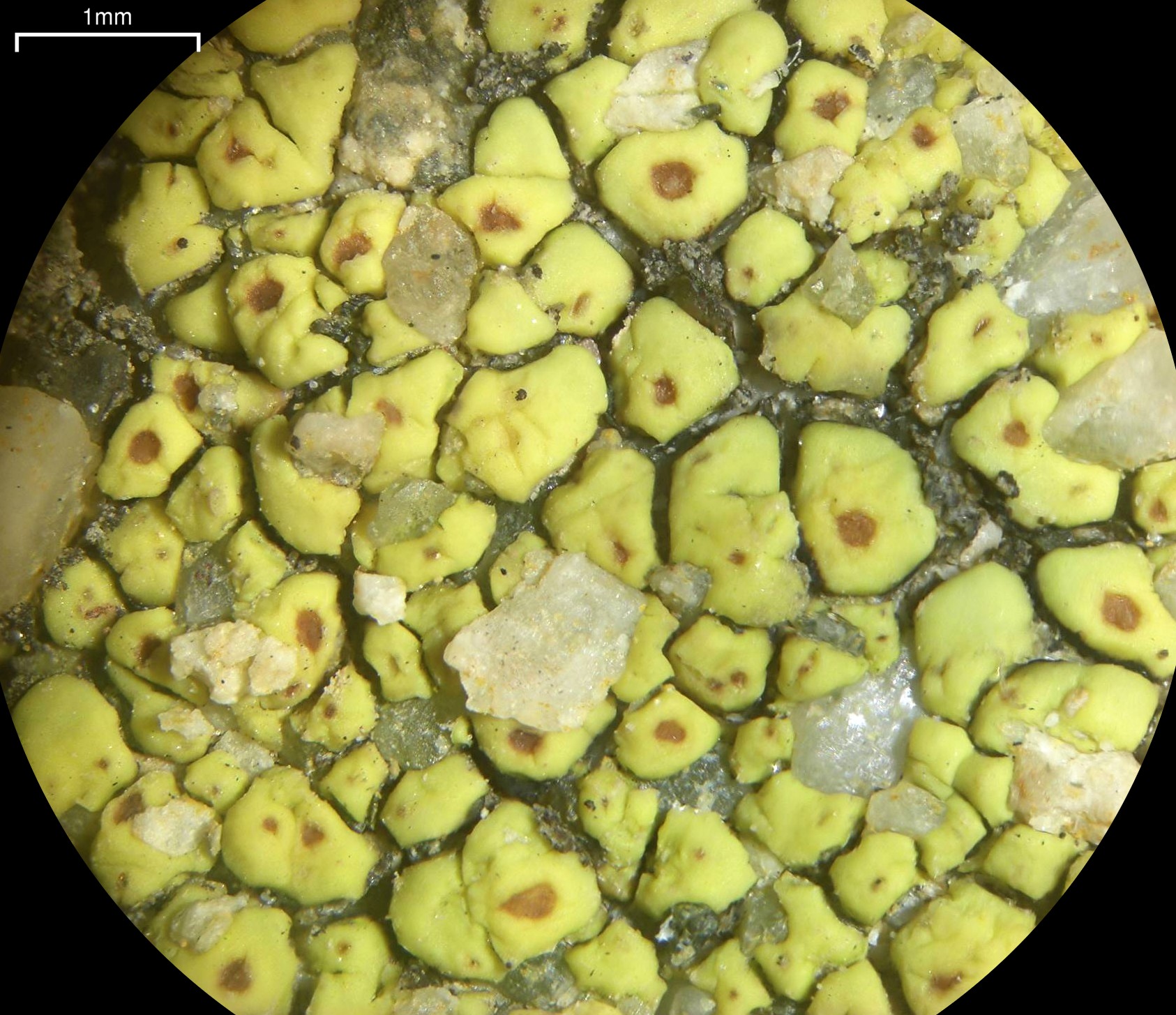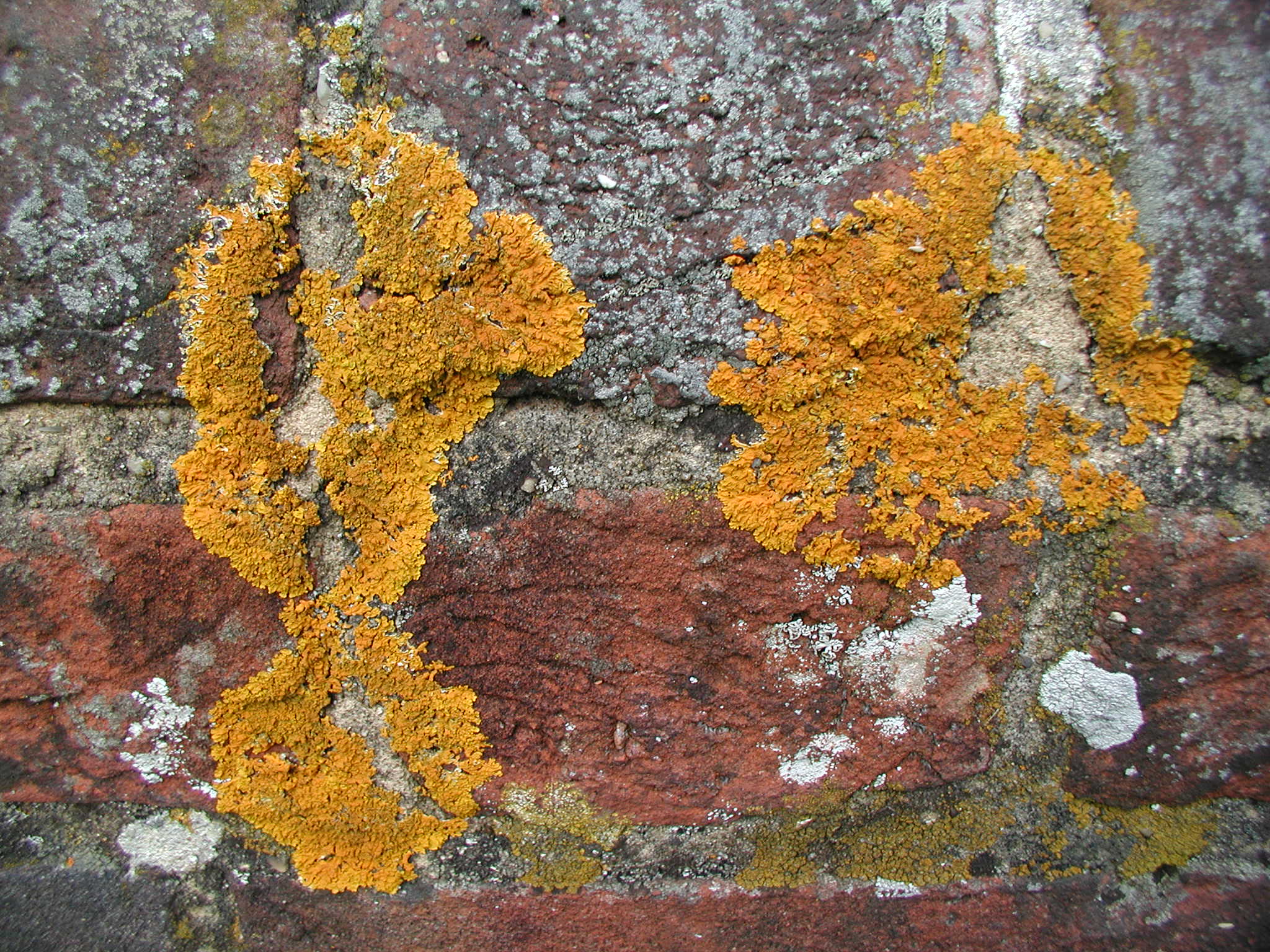|
Acarospora
''Acarospora'' is a genus of mostly lichen-forming fungi in the family Acarosporaceae. Most species in the genus are crustose lichens that grow on rocks in open and arid places all over the world. They may look like a cobblestone road or cracked up old paint, and are commonly called cobblestone lichens or cracked lichens.Field Guide to California Lichens, Stephen Sharnoff, Yale University Press, 2014, They usually grow on rock (are "saxicolous"), but some grow on soil (terricolous) or on other lichens. Some species in the genus are fungi that live as parasites on other lichens (lichenicolous fungi). ''Acarospora'' is a widely distributed genus, with about 128 species according to a 2008 estimate. Species in ''Acarospora'' may be shiny as if covered with a glossy varnish, or dull and powdery looking. They have a diverse range of colors, from the brilliant yellow bright cobblestone lichen, to the dark reddish-brown mountain cobblestone lichen, or they can appear tan, gray, or w ... [...More Info...] [...Related Items...] OR: [Wikipedia] [Google] [Baidu] |
Acarosporaceae
The Acarosporaceae are a family of fungi in the order Acarosporales. Members of this family have a widespread distribution, and are mostly lichenized with green algae. According to a 2021 estimate, the family contains 11 genera and about 260 species. The family is characterised by a formed of paraphysoids (hyphal structures similar in function to true paraphyses, but often branched and forming a network). Phylogeny Formerly classified in the fungal order Lecanorales, phylogenetic analyses in 1998 suggested that the Acarosporaceae belong outside this order; further analysis supported this conclusion. The Acarosporaceae is the most basal family in the division Lecanoromycetes. Description Most members of the Acarosporaceae are lichenised, although a rare few are lichenicolous. The form of the thallus ranges from crustose to squamulose to -somewhat umbilicate. The ascomata are in the form of apothecia, which are usually immersed in the thallus. They are typically , although a fe ... [...More Info...] [...Related Items...] OR: [Wikipedia] [Google] [Baidu] |
Acarospora Schleicheri
''Acarospora schleicheri'', the soil paint lichen, is a bleached to bright yellow areolate to squamulose lichen that commonly grows to on soil (terricolous) in arid habitats of southern California and Baja California, also in Europe and Africa.Field Guide to California Lichens, Stephen Sharnoff, Yale University Press, 2014, ''Acarospora schleicheri'', Lichen Flora of the Greater Sonoran Desert Region. Vol 3., Nash, T.H., Ryan, B.D., Gries, C., Bugartz, F., (eds.) 2001/ref> It produces rhizocarpic acid as a secondary metabolite, which gives it a yellow coloration and serves to protect it from the sun. Its lower surface is also yellow. It can be greenish when moist. Roundish, angular, or irregularly shaped squamules are 0.5–4 mm in diameter. There are 0–1 (sometimes 2–3) apothecia embedded in the thallus, with 0.4–1.2 mm roundish black to reddish-brown, or dark brown discs, which sometimes fill the areola so as to be lecanorine. It divides vegetatively on the s ... [...More Info...] [...Related Items...] OR: [Wikipedia] [Google] [Baidu] |
Mountain Cobblestone Lichen
''Acarospora elevata'', the mountain cobblestone lichen, is a shiny dark reddish brown to dark brown verrucose to aereolate crustose lichen that grows up to wide on granite in central and southern California to Baja California, and high elevations in the Rocky Mountains.Field Guide to California Lichens, Stephen Sharnoff, Yale University Press, 2014, Lichen Flora of the Greater Sonoran Desert Region. Vol 3., Nash, T.H., Ryan, B.D., Gries, C., Bugartz, F., (eds.) 2001/ref> It is usually only found above because it is eaten by red mites at lower elevations. In the Californias, it is mostly found at high elevations (hence ''"elevata"''), but sometimes in coastal locations where it is less glossy. It grows in full sun, mostly on hard granite, but sometimes other igneous or carbonate rock, from in elevation. It may start by growing on members of the genus ''Aspicilia'', or other such pioneer species on hard rocks. There are typically between zero and four apothecia on each ar ... [...More Info...] [...Related Items...] OR: [Wikipedia] [Google] [Baidu] |
Bright Cobblestone Lichen
''Acarospora socialis'' (bright cobblestone lichen) is a usually bright yellow areolate to squamulose crustose lichen in the family Acarosporaceae that grows up to 10 cm wide, mostly on rock in western North America.Lichen Flora of the Greater Sonoran Desert Region, Vol 3, (2001), Nash, T.H., Ryan, B.D., Gries, C., Bugartz, F., (eds./ref> It is among the most common lichens in the deserts of Arizona and southern California.Field Guide to California Lichens, Stephen Sharnoff, Yale University Press, 2014, It grows on sandstone, intrusive and extrusive igneous rock such as granitics, in all kinds of exposures to sunlight, including vertical rock walls. It is found in North America, including areas of the Mojave Desert and Sonoran Desert region, to Baja California Sur. It is the most common yellow member of its genus in southwestern North America. It sometimes, but rarely, grows on other soil crusts. It is a pioneer species. It is variable in its growth pattern. ca ... [...More Info...] [...Related Items...] OR: [Wikipedia] [Google] [Baidu] |
Crustose Lichen
Crustose lichens are lichens that form a crust which strongly adheres to the substrate (soil, rock, tree bark, etc.), making separation from the substrate impossible without destruction. The basic structure of crustose lichens consists of a cortex layer, an algal layer, and a medulla. The upper cortex layer is differentiated and is usually pigmented. The algal layer lies beneath the cortex. The medulla fastens the lichen to the substrate and is made up of fungal hyphae. The surface of crustose lichens is characterized by branching cracks that periodically close in response to climatic variations such as alternate wetting and drying regimes. Subtypes * Powdery – considered as the simplest subtype due to the absence of an organized thallus. :The thallus appears powdery. :E.g. Genera '' Lepraria'', ''Vezdaea'' * Endolithic – grows inside the rock, usually in interstitial spaces between mineral grains. The :upper cortex is usually developed. :E.g. Genus '' Lecidea'' * Epi ... [...More Info...] [...Related Items...] OR: [Wikipedia] [Google] [Baidu] |
List Of Common Names Of Lichen Genera
This is a list of common names of lichen genera. When a common name for a lichen genus is the same as the scientific name for that genus, it is not included in the following list. This list only includes genera common names that are widely used, as indicated by the common name either appearing in a peer reviewed scientific publication or in a scientifically reliable reference source. A common name for a lichen genus will often uniquely refer to that genus, but not always. Sometimes the same common name may refer to several different genera, which may not be related by sharing common ancestry. An example is that "wart lichen" refers to at least five different genera in four different families. Sometimes the same genus may have more than one widely used common name. For example, members of the genus '' Staurothele'' are commonly called "wart lichens", and also " rock pimples". Lichen genus common names my come from the shape, color, or other feature of some members of a genus. Othe ... [...More Info...] [...Related Items...] OR: [Wikipedia] [Google] [Baidu] |
Areolate
Lichens are composite organisms made up of multiple species: a fungal partner, one or more photosynthetic partners, and sometimes a basidiomycete yeast. They are regularly grouped by their external appearance – a characteristic known as their growth form. Lichenologists have described a dozen of these forms: areolate, byssoid, calicioid, cladoniform, crustose, filamentous, foliose, fruticose, gelatinous, leprose, placoidioid and squamulose. Of these, crustose, foliose and fruticose are the most commonly encountered. With the exception of calicioid lichens, growth forms are based on the appearance of the thallus, which is the vegetative (non-reproductive) part of the lichen. In most species, this form is determined by the lichen's fungal partner, though in a small number, it is instead the photobiont that determines the lichen's morphology. In some growth forms, the outermost layer of the thallus consists of tightly woven fungal . This layer, known as the cortex, may be foun ... [...More Info...] [...Related Items...] OR: [Wikipedia] [Google] [Baidu] |
Lichen
A lichen ( , ) is a composite organism that arises from algae or cyanobacteria living among filaments of multiple fungi species in a mutualistic relationship.Introduction to Lichens – An Alliance between Kingdoms . University of California Museum of Paleontology. Lichens have properties different from those of their component organisms. They come in many colors, sizes, and forms and are sometimes plant-like, but are not plants. They may have tiny, leafless branches ( fruticose); flat leaf-like structures ( foliose); grow crust ... [...More Info...] [...Related Items...] OR: [Wikipedia] [Google] [Baidu] |
Rimose
''Rimose'' is an adjective used to describe a surface that is cracked or fissured.Lichen Glossary, Australian Botanic Garden The term is often used in describing lichens. A rimose surface of a lichen is sometimes contrasted to the surface being . Areolate is an extreme form of being rimose, where the cracks or fissures are so deep that they create island-like pieces called |
Stipes
Crucifixion is a method of capital punishment in which the victim is tied or nailed to a large wooden cross or beam and left to hang until eventual death from exhaustion and asphyxiation. It was used as a punishment by the Persians, Carthaginians and Romans, among others. Crucifixion has been used in parts of the world as recently as the twentieth century. The crucifixion of Jesus of Nazareth is central to Christianity, and the cross (sometimes depicting Jesus nailed to it) is the main religious symbol for many Christian churches. Terminology Ancient Greek has two verbs for crucify: (), from (which in today's Greek only means "cross" but which in antiquity was used of any kind of wooden pole, pointed or blunt, bare or with attachments) and () "crucify on a plank", together with ( "impale"). In earlier pre-Roman Greek texts usually means "impale". The Greek used in the Christian New Testament uses four verbs, three of them based upon (), usually translated "cross". T ... [...More Info...] [...Related Items...] OR: [Wikipedia] [Google] [Baidu] |



.jpg)
